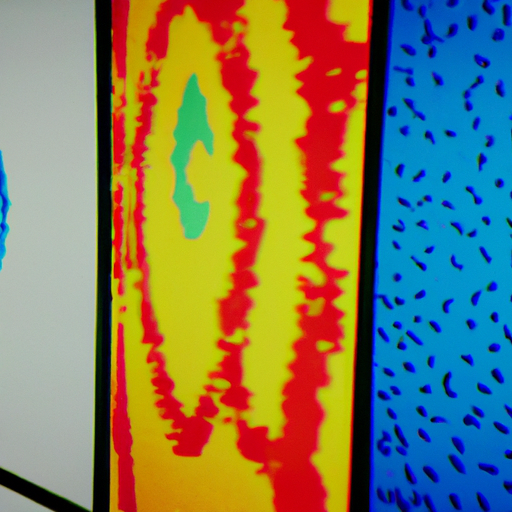
-
Table of Contents
- The Use of Animation in Illustrated Storytelling
- The Evolution of Animation in Storytelling
- The Benefits of Animation in Illustrated Storytelling
- Animation in Different Industries
- 1. Advertising
- 2. Education
- 3. Gaming
- 4. Film and Television
- Case Studies: Successful Use of Animation in Illustrated Storytelling
- 1. “Spider-Man: Into the Spider-Verse”
- 2. “The Adventures of Tintin: The Secret of the Unicorn”
- Conclusion
The Use of Animation in Illustrated Storytelling

Illustrated storytelling has been a powerful medium for centuries, captivating audiences with its ability to combine visual art and narrative. However, with the advent of animation, illustrated storytelling has taken on a whole new dimension. Animation adds movement, depth, and emotion to static illustrations, enhancing the storytelling experience and engaging viewers in a unique way. In this article, we will explore the use of animation in illustrated storytelling, its benefits, and its impact on various industries.
The Evolution of Animation in Storytelling
Animation has come a long way since its early days as hand-drawn frames on celluloid. With advancements in technology, animation has become more accessible and versatile, allowing artists to bring their illustrations to life. The integration of animation and illustrated storytelling has opened up a world of possibilities, enabling creators to convey complex narratives and emotions in ways that were previously unimaginable.
One of the earliest examples of animation in illustrated storytelling is Walt Disney’s “Steamboat Willie” (1928), featuring the iconic character Mickey Mouse. This short film combined synchronized sound and animation, revolutionizing the industry and paving the way for future animated storytelling. Since then, animation has become an integral part of various forms of media, including films, television shows, video games, and even advertising.
The Benefits of Animation in Illustrated Storytelling
The use of animation in illustrated storytelling offers several benefits that enhance the overall storytelling experience. Here are some key advantages:
- Engagement: Animation adds movement and interactivity to illustrations, capturing the viewer’s attention and immersing them in the story. The dynamic nature of animation keeps the audience engaged and eager to see what happens next.
- Emotion: Animation has the power to evoke emotions in ways that static illustrations cannot. Through the use of movement, facial expressions, and body language, animated characters can convey a wide range of emotions, creating a deeper connection with the audience.
- Visual Appeal: Animated illustrations often have a unique visual style that is visually appealing and captivating. The use of vibrant colors, fluid motion, and imaginative designs can enhance the overall aesthetic of the story, making it more visually engaging.
- Storytelling Possibilities: Animation allows creators to push the boundaries of storytelling by incorporating fantastical elements, surreal landscapes, and imaginative scenarios. This opens up a world of possibilities, enabling storytellers to explore themes and concepts that may be difficult to convey through traditional illustrations.
Animation in Different Industries
The use of animation in illustrated storytelling extends beyond entertainment media. It has found its place in various industries, enhancing communication, education, and marketing efforts. Let’s explore some examples:
1. Advertising
Animation has become a popular tool in advertising due to its ability to capture attention and convey complex messages in a short amount of time. Animated advertisements often use humor, creativity, and memorable characters to leave a lasting impression on viewers. For example, the Geico Gecko and the Coca-Cola polar bears are iconic animated characters that have become synonymous with their respective brands.
2. Education
Animation has transformed the way educational content is delivered. It can simplify complex concepts, making them more accessible and engaging for learners of all ages. Animated educational videos, such as those found on platforms like Khan Academy and TED-Ed, combine visuals, narration, and storytelling to create an immersive learning experience.
3. Gaming
Animation plays a crucial role in the gaming industry, bringing characters, environments, and narratives to life. From cinematic cutscenes to in-game animations, the use of animation enhances the player’s immersion and emotional connection to the game world. Games like “The Legend of Zelda: Breath of the Wild” and “The Last of Us” are praised for their stunning animations that contribute to the overall storytelling experience.
4. Film and Television
Animation has long been a staple in the film and television industry, with animated movies and series captivating audiences of all ages. From Disney classics like “The Lion King” to adult-oriented animations like “BoJack Horseman,” animation offers a diverse range of storytelling possibilities. Additionally, animation allows filmmakers to explore genres and themes that may be challenging to convey through live-action.
Case Studies: Successful Use of Animation in Illustrated Storytelling
Let’s take a closer look at two case studies that highlight the successful use of animation in illustrated storytelling:
1. “Spider-Man: Into the Spider-Verse”
“Spider-Man: Into the Spider-Verse” (2018) is an animated superhero film that received critical acclaim for its innovative animation style and compelling storytelling. The film combined traditional hand-drawn animation techniques with computer-generated imagery, creating a visually stunning and dynamic world. The use of animation allowed the filmmakers to explore multiple dimensions and bring various versions of Spider-Man to life, captivating audiences with its unique visual style and engaging narrative.
2. “The Adventures of Tintin: The Secret of the Unicorn”
“The Adventures of Tintin: The Secret of the Unicorn” (2011) is a motion-capture animated film directed by Steven Spielberg. The film seamlessly blended motion-captured performances with computer-generated animation, creating a visually immersive experience. The use of animation allowed the filmmakers to bring the beloved comic book characters to life in a way that stayed true to the original illustrations while adding depth and movement to the storytelling.
Conclusion
The use of animation in illustrated storytelling has revolutionized the way stories are told and consumed. Animation adds movement, emotion, and visual appeal to static illustrations, enhancing engagement and creating a deeper connection with the audience. From advertising to education and entertainment, animation has found its place in various industries, offering unique storytelling possibilities. As technology continues to advance, we can expect animation to play an even more significant role in the future of illustrated storytelling.
